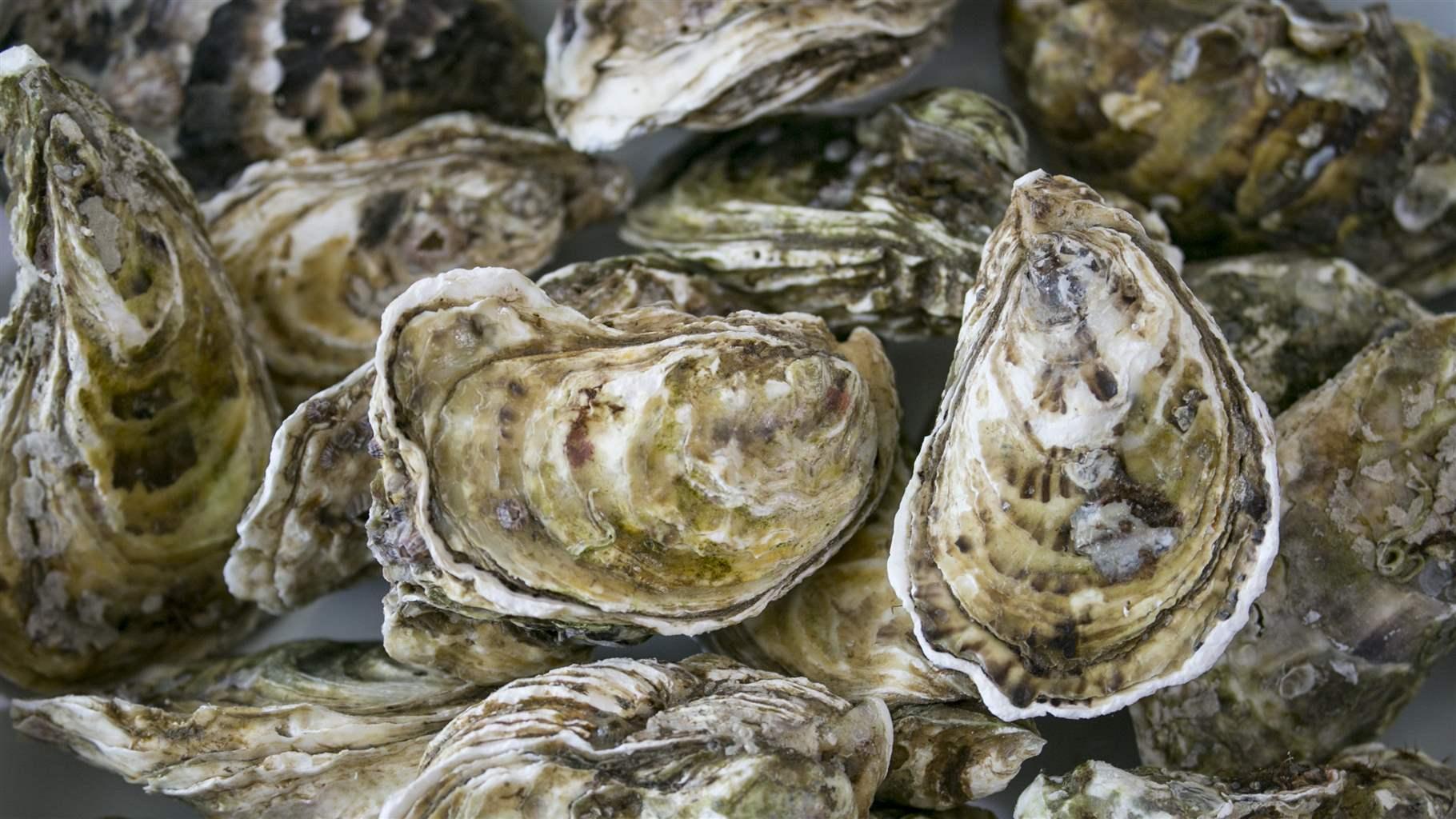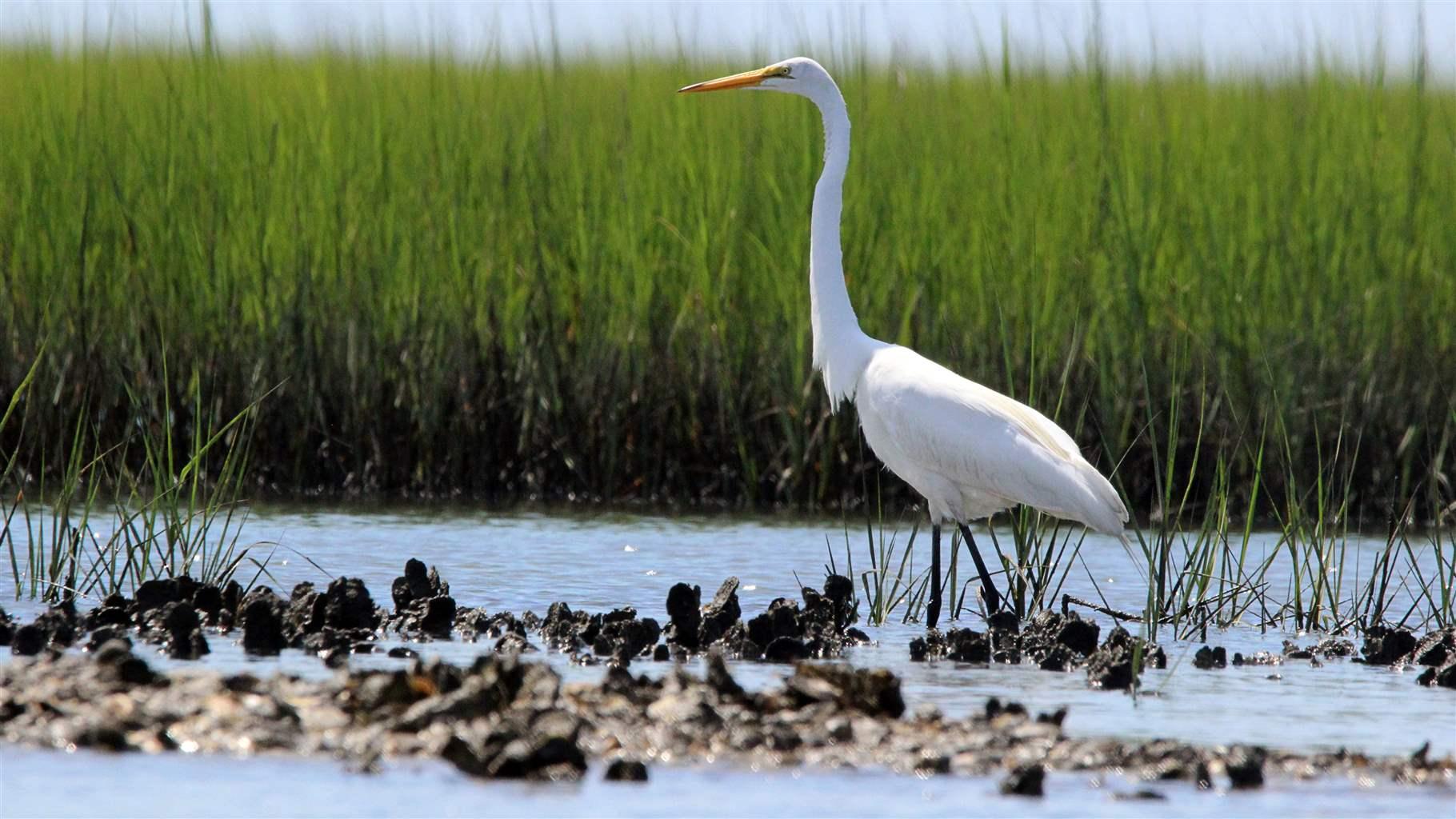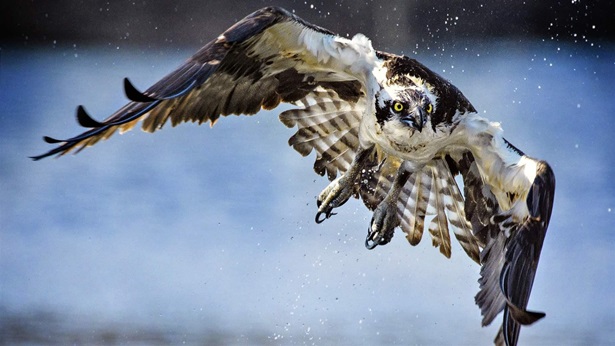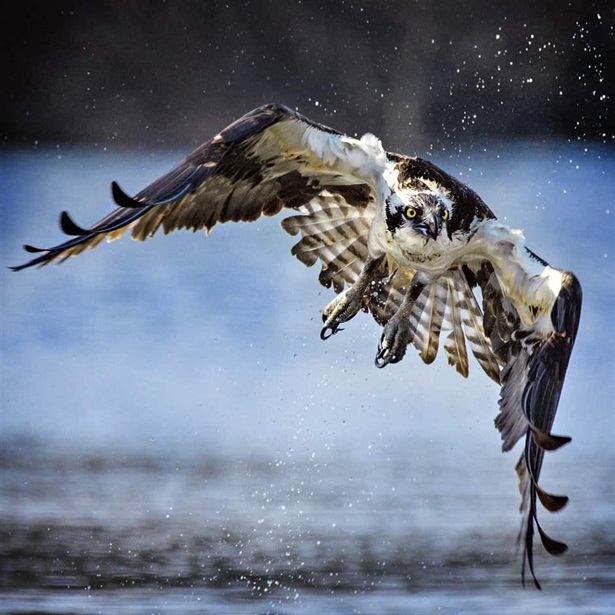15 Facts About Oysters and the Need to Protect Them
Healthy populations buffer coastlines, boost economies, and benefit marine life

Did you know a raw oyster is still alive as you eat it? Or that people have consumed them since prehistoric times? Or that oysters filter and clean water while they eat?
Oysters play a big role in marine and coastal environments but face many threats, from pollution to changing ocean conditions to dredging. That’s why it’s critical to restore reefs and safeguard oyster habitat. Here are 15 things you might be surprised to learn about Eastern oysters:
- A healthy adult oyster can filter the amount of water it takes to fill a small bathtub every day. Oysters feed by pumping water through their gills and in the process capture algae and other particles, sort of like a strainer. So by cleaning the water, oysters help maintain the balance of their ecosystems.
- Oysters change gender. Most start out male, but some change to female after they spawn once or twice.
- Oyster reefs are one of the most imperiled marine habitats on Earth, with 85% to 90% of wild reefs lost over the past century.
- Very few oysters produce jewelry-quality pearls on their own; that usually requires a human prying open a cultivated oyster’s shell to insert a grain of sand or other seeding material. Oysters make pearls when such foreign substances lodge in their shells. The oyster deposits layers of nacre, the material that makes up pearls, around the foreign body to wall it off and reduce irritation.
- To reproduce, oysters spawn tiny larvae that move through the water and settle on a surface, such as other oyster shells, where they will grow for the rest of their lives. Once attached, these larvae are called spat. As generations of spat grow into adults, they form oyster beds or reefs.
- Oyster reefs help diffuse energy from storms and tides, which helps safeguard coastlines by preventing erosion and protecting estuary waters that serve as breeding grounds for marine life. Extremely strong storms can bury or move these reefs.
- Oysters live in brackish and saltwater bays, estuaries, tidal creeks, shallow ocean areas, and intertidal zones—regions submerged at high tide and exposed at low tide.
- Many marine animals hide from predators in oyster reefs and eat tiny organisms that are drawn there. Reefs host animals ranging from crabs, mussels, and snails to herring, anchovies, and menhaden. These environments provide food for turtles, shorebirds, and recreationally and commercially valuable fish such as red drum, flounder, striped bass, and spotted sea trout.
- Oysters have three-chambered hearts that pump colorless blood throughout their bodies. They breathe with gills, just like fish.
- Wild oysters can live 25 to 30 years, but typically most don’t survive past six years.
- Eastern oysters are prey for stone crabs, fish such as black drum, some kinds of sea snails, and sponges that bore holes in oyster shells to find homes.
- Today, oyster populations are at historic lows. Erosion from development, along with wetland loss, pollution, overharvesting, changing ocean conditions, freshwater discharges, disease, and damaging fishing gear, have wiped out some populations and caused others to plummet.
- Oyster shells are recyclable. Restaurants and other groups in coastal communities collect them to build new reefs.
- Governments, conservation groups, researchers, and others along America’s coastlines are building new reefs from recycled shells, concrete, and crushed limestone. They are also growing oysters in tanks and farms to meet consumer demand.
- Some oyster reefs are set aside as sanctuaries—places where oysters are left alone so their populations can recover and potentially spread even beyond the sanctuary boundaries.
For small mollusks, oysters play an outsized role in coastal communities, so protecting and restoring them makes sense for economies, the marine environment, and our plates.
Holly Binns directs The Pew Charitable Trusts’ U.S. Conserving Marine Life program in the Gulf of Mexico and U.S. Caribbean; Joseph Gordon directs the program along the Atlantic coast.










